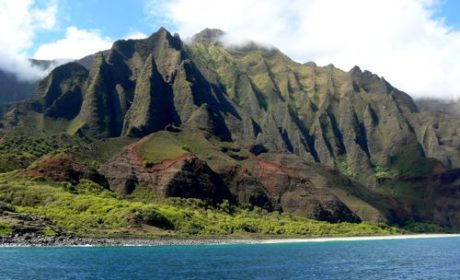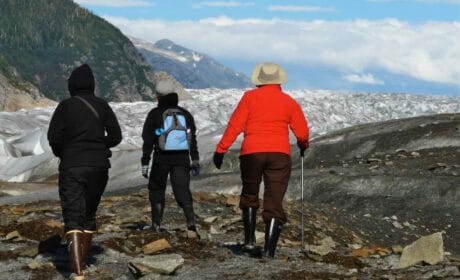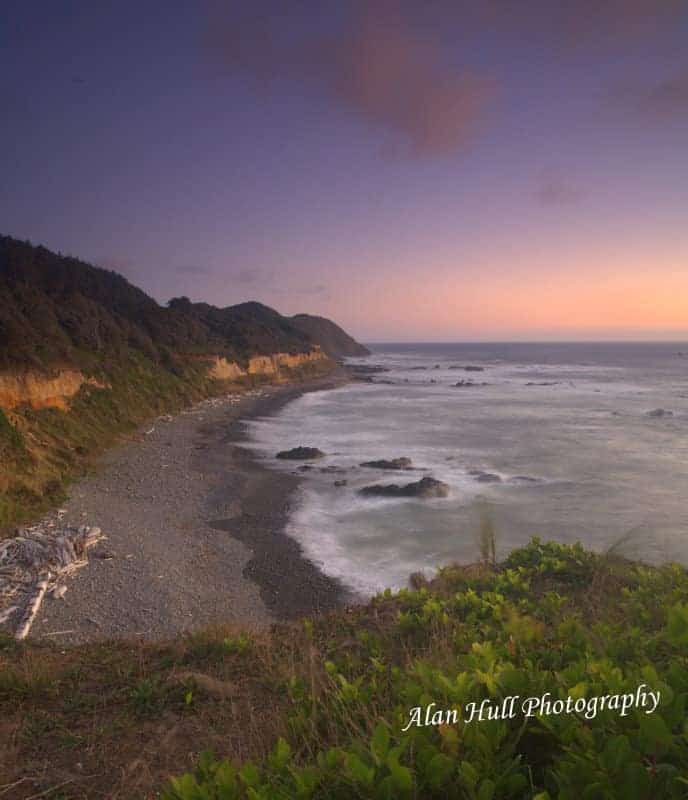Are you a waterfall fan? Do you know about Silver Falls State Park in Oregon?
In a state that’s known for its out-of-this-world natural beauty, of course there would be a state park with 10 waterfalls. Whether exploring the Oregon’s amazing coastline or trendy towns, boomer travelers are in for a treat, especially when it comes to exploring Silver Falls State Park.
Guest contributor, Ann Randall, shows us how to make the most of a Silver Falls State Park trip based upon her sponsored trip to the area.When it comes to waterfalls, hikes, and history, visiting Silver Falls State Park should be at the top of your list.
Silver Falls State Park in Oregon’s Willamette Valley is both waterfall and historical architecture nirvana. Ten cascading falls can be found on its scenic Trail of Ten Falls that winds through part of the park’s 9,065 acres.
Half of the falls are over 100 feet high with a trail that meanders behind four of them to give hikers a backside view of the cascade and mossy grottos created by the force and heavy spray.
The park also contains two Historic Districts listed on the National Register of Historic Places for its examples of Rustic Style architecture—the Silver Falls State Park Concession Building Area and Silver Creek Youth Camp.
Table of Contents
Things to do at Silver Falls State Park

Active boomer travelers will find plenty to do at this popular Oregon state park. Located in Silverton, about 20 miles southeast of Salem, the largest of Oregon’s 361 state parks, Silver Falls State Park offers 15 miles of hiking trails—in addition to the Trail of Ten Falls. Visitors enjoy birdwatching, 14 miles of horse trails, and a 4-mile bike path for fitness buffs.
Hiking the trails at Silver Falls

Designated a National Recreation Trail, the moderate 8.7 mile Trail of Ten Falls meanders through a lush forest, while running along the banks of Silver Creek for most of the way. It takes about 3 hours to hike the entire trail, depending on how long you stop to photograph the ten waterfalls.
It’s also possible to gaze out from behind the curtains of falling water at four of the waterfalls. The hike can be completed in sections for anyone not wanting to travel the entire distance.
This is one hike where waterproof hiking shoes come in handy. The trails can be wet, slippery in places, and there’s some elevation loss and gain to the Trail of Ten Falls.
Boomer Travel Tip
Take a look at our day hiking essentials before heading down the trail.
Birdwatching in the park
For avid birdwatchers, the Silver Falls park is located on the Oregon Cascades Birding Trail. Its low elevation, old growth conifer forest (a piece of the last remaining temperate rain forest in North America), provides a home for five varieties of owls, two types of grouse and seven other indigenous bird species.
Interpretive Programs
The Friends of Silver Falls organization maintains a robust interpretive program consisting of walks and presentations about the park’s history, flora and fauna as well as staffing the Nature Store. Additionally, the park sponsors public events including Historic Silver Falls Day and the Christmas Festival.
The history of Silver Falls State Park

Silver Falls owes its existence to the advocacy of a dedicated local photographer, a U.S President, the labor of the Civilian Conservation Corps and handicraft skills of the Works Progress Administration. In the late 1800’s the site was once the location of Silver Falls City, an ambitiously named small town consisting of a hotel, three stores, a church, dancehall, tavern and about 200 residents.
Beginning in 1900, June Drake, a local resident, used his photos of the ten waterfalls to begin a 33-year lobbying effort to convince the local chamber of commerce that the area’s unique proximity of the ten falls should be preserved in a park. In 1933 the land was dedicated as a state park.
However, two years later, President Franklin D Roosevelt declared the property a Recreational Demonstration Area. The project intended to showcase federal land acquisition, its development for recreational purposes, and transfer back to state governments.
Silver Falls was one of two Recreation Demonstration Areas on the west coast and one of 46 public parks in the nation expanded and developed under the federal initiative. In 1935, over 200 unemployed young men and women, hired under the back to work programs of the Civilian Conservation Corps and Works Progress Administration, worked here.
They were dispatched to Silver Falls to construct buildings, trails, rock walls and bridges and to replant trees. In 1947, the park was transferred back to the State of Oregon with another 5000 acres added to the park’s boundaries.
Historical architecture at Silver Falls

The Silver Falls State Park structures erected during the seven years of CCC and WPA construction were built in Rustic Style, an architectural designation introduced by the National Park Service in the 1930’s for all its newly built parks. Crater Lake Lodge is another fine example of the style.
Emphasizing the use of local materials, handicraft work and harmony with the natural environment, the expansive park has over 43 examples of Rustic Architecture structures.
Forty of the historic structures are found in Camp Silver Creek, one of the two youth camps built during the period. Today the camp provides group overnight facilities with a recreation hall, craft and dining halls and cabins.
Most park visitors, however, see the preserved architectural examples in the park’s historic Concession Building Area—in particular, the South Falls Lodge (now known as Smith Creek Village), the Nature Store gift shop and the Combination Building, a shelter and kitchen for day use.
Where to stay at Silver Falls State Park
The park has a variety of year-round and seasonal accommodations and day-use and group facilities ranging from electrical hookup and tent sites to rustic cabins and dormitories. It also has primitive camp sites at its Howard Creek Horse Camp.
For those who prefer to take advantage of the park’s day-use opportunities, but not the overnight accommodations, it’s a half hour drive to the charming town of Silverton with restaurants, B&B’s and art galleries. Start your Silverton lodging search here.
Best time to visit Silver Falls State Park
Although open year round, spring is the prettiest time to visit Silver Falls State Park. The waterfalls are gushing, trees are budding out and flowers are blooming. Be aware that weekends can be crowded.
The waterfalls also run full during the winter. But expect cold temperatures that can cause icy conditions on the trails.
If you visit in the summer, you’ll see less volume in the waterfalls as this region of the Pacific Northwest enters the dry season. It’s still worth a visit as cooling off to a waterfall’s spray makes summer hiking refreshing.
Fall is less crowded but the waterfalls will not be flowing as swiftly. However crisp temperatures and autumn colors enhance the experience.
How to get to Silver Falls
Silver Falls State Park is located on HWY 214, twenty miles southeast of Salem and about 90 minutes south of Portland.
More things to do on a boomer trip to Oregon
Since you’ve traveled all the way to Oregon, make use of your stay in this beautiful state. We recommend:
- Go off-the-beaten-path at Leslie Gulch in Eastern Oregon.
- Visiting John Day Fossil Beds National Monument.
- Take a fall road trip on the Oregon central coast.
- Exploring Crater Lake National Park in late May.
Disclosure: Ann’s visit to Silver Falls State Park was sponsored by Travel Salem.



